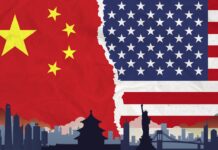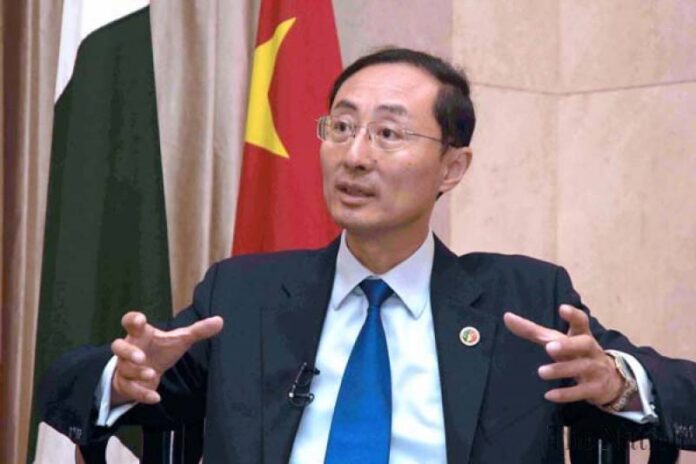ISLAMABAD: China’s vice minister for foreign affairs Mr Sun Weidong has said that CPEC projects have brought about a total turnaround for Pakistani economy by creating 2,36,000 direct jobs, including 1,55,000 jobs for Pakistani employees.
“It is the numerous Pakistani brothers and sisters who participated in CPEC that drive it forward. And in turn, CPEC projects have continued to benefit local people through job creation, internship, training and exchange programs. It has become a cradle of talent in Pakistan. Over the past decade, many Pakistanis have become professionals who played the underpinning role in key managerial and technical positions. Primary, secondary and vocational schools brought by CPEC also lay the foundation for the development of talent. Tens of thousands of young people enhanced their skills through vocational education and training,” said the minister in an interview here during his visit to Pakistan to attend the completion of ten years of the CPEC.
The Minister, who has an exclusive experience of serving as Chinese Ambassador to Pakistan and India, said Thar Coal Power Plant has altogether provided training for more than 3,000 Pakistani truck drivers.
“Notably, more than 50 local women have been trained to become truck drivers, and are thus able to support their families. Every Chinese engineer at the Thar Coal Power Plant is an experienced technician, and every one of them can train a few Pakistani learners with different skills. The Thar project team also took part in the building of more than 20 schools, and funded poor students to study in Chinese universities. The project has built an oasis in the middle of the deserts. Since the construction started, it has received hundreds of thank-you letters from locals, all filled with deep affections toward Chinese workers and China,” he added.
He said China will continue to step up cooperation with Pakistan in education, training and people’s well-being, turn human resources to talent resources, create more jobs and train more high-skilled talent. In this way, the Pakistani people can better enjoy the dividends of CPEC, he added.
Referring to the visit of Vice Premier He Lifeng, Sun Weidong said the visit by the Chinese leader this is the first visit Mr He Lifeng with a delegation abroad since he took office as Vice Premier of the State Council.
“China and Pakistan need to deepen strategic cooperation, overcome challenges together, and strive for common development. China stands ready to work with Pakistan to implement the important consensus of our leaders, deepen strategic mutual trust, further our traditional friendship, and expand exchanges and cooperation, so as to promote our all-weather strategic cooperative partnership and accelerate the building of an even closer China-Pakistan community with a shared future in the new era,” he added.
The minister said this year marks the 10th anniversary of the Belt and Road Initiative (BRI) proposed by President Xi Jinping. Under the BRI, CPEC is an all-encompassing project that is the earliest and broadest and delivers the most visible benefits. Ten years since its start, 36 projects have been completed or are now under construction.
“They have brought 25.4 billion US dollars of direct investment to Pakistan. Many projects under CPEC, including Gwadar port and infrastructure, energy and industry projects, have important and positive impacts to Pakistan’s development,” he added.
“Gwadar Port has turned from a small fishing village to a regional transport hub, becoming the first ever port logistics corridor in the region. Also at Gwadar, the Eastbay Expressway is already open for traffic, and construction of the new Gwadar International Airport will be fully completed. Construction has already started for Gwadar Free Zone North. Many livelihood and agricultural technology companies have started operation, and a convention, exhibition and trading center is already set up. The number of ships docking at Gwadar Port continues to grow. Their business includes agricultural products, fertilizers and livelihood products,” he said.
The minister said China has provided solar PV systems to the people in Gwadar, which has significantly improved their well-being. The desalination plant, after put into use, will effectively alleviate local shortages of fresh water.
“The China-aided Gwadar Port hospital has provided much-needed healthcare and medicines to Gwadar. The Gwadar Technical and Vocational Institute trains more than 1,000 technical professionals every year, providing boosts for the development of Gwadar and Balochistan. The newly-built Faqeer Primary School adds more educational resources and provides much easier access to education for local children, who now have a spacious, well-lit classrooms to learn in. Their expectation for a better life and desire to change their future are no longer just dreams,” he added.
Taking stock of energy projects under the CPEC, Mr Sun Weidong said that energy is one of the most heavily invested, fastest advancing and most productive cooperation areas under CPEC.
“Under CPEC, there are already 14 energy projects that have started commercial operation. They have a total installed capacity of 8,020 megawatts, accounting for one fifth of Pakistan’s total, and generate nearly one third of Pakistan’s electricity at peak hours. Among them, the Sahiwal Coal-Fired Power Plant is one of the clean coal-fired power plants with the largest installed capacity in Pakistan. Its construction took only 22 months, which is the fastest among all coal-fired power plants under CPEC. The Pakistani government hails it as a miracle in the history of the country’s power construction,” he added.
He said hydro and wind power projects have also delivered good news and the Karot Hydropower Plant is the first hydropower investment project in Pakistan that uses Chinese technologies and standards exclusively.
“The Sachal Wind Farm is the first project signed under CPEC to start commercial operation. It has a total installed capacity of 50 thousand kilowatts. In the deserts in southern Sindh, ground temperature often exceeds 40 degrees Celsius, and strong winds often hit construction sites with sand and rocks all of a sudden. Despite the difficulties, Chinese companies completed the construction of the Wind Farm in high quality,” he added.
The minister said that CPEC has added 510 kilometers of highways in Pakistan and the Sukkur-Multan Motorway is the largest transport infrastructure project under CPEC.
“With a total length of 392 kilometers, the Motorway cuts travel time between the two cities from 11 hours to less than four. Construction workers have performed their duty under extreme heat in the deserts, which is indeed a touching story. During COVID-19, the completion of the Motorway would not be possible without the Chinese and Pakistani workers who had stood on their post and made selfless contributions. Due to COVID protocols, a Pakistani worker was unable to return to his hometown in half a year. But this is what he said: My Chinese brothers couldn’t go home either. They had left their families to help us build roads. Compared with what they’re going through, it’s not such a big issue for us,” he added.
He said the Orange Line Metro in Lahore has opened up a new chapter for urban railway in Pakistan. As one of the early harvests of CPEC, it is Pakistan’s first metro line and the only one so far, taking Pakistan to the “metro era.” Commuting time between both ends of the line has been reduced from 2.5 hours to 45 minutes. It has truly made traveling much easier for the 12 million local people.
“The experience and achievement over the past decade are our precious asset and solid foundation for us to strengthen cooperation on various fronts. Looking forward, China is ready to work with Pakistan to implement the long-term plan of CPEC and the overall planning of industrial park cooperation, and build CPEC into a growth corridor. We will give full play to CPEC’s role of creating jobs and benefiting the people, and build CPEC into a livelihood-enhancing corridor”.
“We will expand cooperation on new areas, such as high tech, mobile communications, e-commerce, AI and smart cities, to build CPEC into an innovation corridor. We will forge greater synergy between the Green Silk Road and the Green Pakistan Initiative, and build CPEC into a green corridor. We will attract more third parties to CPEC to promote regional connectivity and build CPEC into an open corridor. These efforts will further advance healthy, safe and sustainable development in Pakistan,” he concluded.























